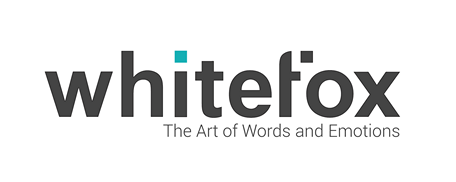Context
We provide the customer service training in the following contexts:
We provide the customer service training in the following contexts:
Selected issues taught during the customer service training:
During the training, we use the following methods and tools:
During the customer service training, we focus in particular on the analysis and practice of key words. We sensitise participants to those language forms that directly involve evoking negative emotions and activate discussions and quarrels. We practise phrases and expressions guaranteeing that your customers will feel important and listened. The Whitefox Statement Coding System was created on the basis of an analysis of over 3,000 transcripts recorded during AC/DC sessions, exercises and simulations; it includes 152 language forms.
Customer service conversations usually last from a few seconds to several minutes. In such short social interactions, our facial expressions have an even greater impact on the emotions of the people we talk to. During the training, we teach participants how to identify 7 basic emotions (joy, sadness, fear, anger, surprise, contempt and disgust) and practise techniques to monitor and control their own facial expressions. In exercises, we use computer software dedicated to facial expression recognition.
Whitefox specialises in analysing the language characteristic for particular stages of adult human development. Following favourite grammatical structures, phrases and words, we describe the logic of action of the person with whom we work. During the training, we help participants discover what they focus their attention, thoughts, emotions and actions most often on. Noticing and naming preferred attitudes and patterns of action is usually the starting point to go beyond the resulting restrictions.
The training is of a practical nature. The lecture part is restricted to the minimum. We do not use slides. Classes rely almost exclusively on performing exercises and simulations.
In our work, we meet people characterised by extremely different Action Logic. Some think ...
Analysis of facial expressions, facial action coding system, Paul Ekman 70'...
Markets are conversations, client, competition, trends, action plan, communication, change...
Psychology of language, narrative and paradigms, propositional calculus, parts of speech, ...
